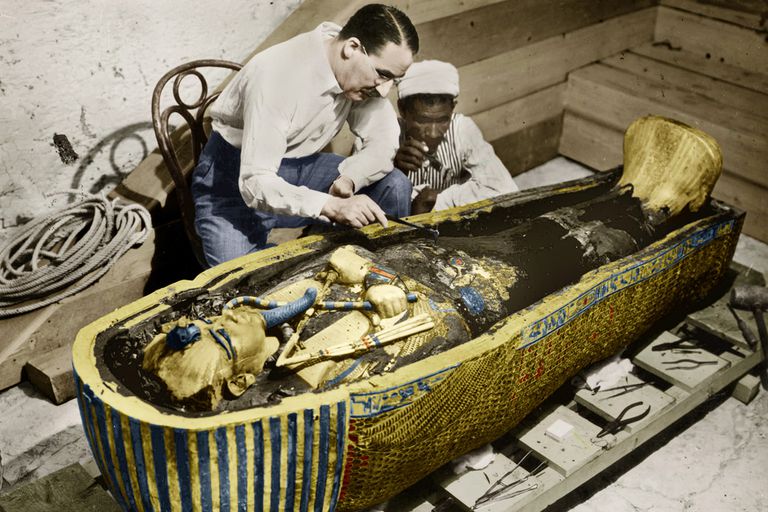
Expectations
Upon purchasing my ticket for the King Tut: Treasures of the Golden Pharaoh exhibit, I was slightly excited. I thought it would be cool to be in the presence of weathered artifacts from ancient Kemet. My excitement faltered, however, after I realized that King Tut’s story would most likely be told through the White gaze. But by the time I realized this, I was already in line at the California Science Center.
Praise of the Tomb Raider
When you first enter the exhibit, you are met with a short film. This film opens up, not with the story of King Tut, but with the story of the archaeologist who raided the Pharaoh’s tomb, Howard Carter. The short introductory film ends by telling you that this exhibit is the result of the two fates of King Tutankhamen and Carter merging. I realized that like all other accounts of historical events, the White curators told the Black Pharaoh’s story through their lens. I was perturbed. To no surprise, the White tomb raider was deemed the hero of King Tut’s story. SMH.Disrespect
The artifacts were fascinating. The descriptions were great as well. However, I found some things to be disrespectful. First, there was no mention of King Tut being a Black Pharaoh. Second, there was very little–if any–mention of his mother, Queen Nefertiti. Third, there was a gift shop at the end of the exhibit. The gift shop was the epitome of cultural appropriation, full of statues and jewelry that was modeled after Egyptian artifacts. After raiding a Black man’s tomb, retelling his history through the White man’s gaze, they’re now selling merchandise, profiting off of their disrespect of King Tut! I grew increasingly irritated. That irritation worsened after I saw a White woman wearing a headdress that resembled that of a Pharaoh. Traditional garb, be it of ancient Kemet, the American South West, ancient Chinese dynasties, etc. should not be worn as costumes. It is a mockery of a culture and a display of blatant disrespect.
The Upside
It wasn’t all bad. Prior to touring the exhibit, I ran into a group of protesters. Black men and women stood outside of the California Science Center passing out flyers. These flyers were educating people on King Tutankhamen’s ethnicity and lineage. On the back of the flyer is a letter that was written to Stephen J. Squeri, the CEO of American Express. The letter demanded that American Express withdraw their sponsorship of the King Tut exhibition. The letter, which is highly informative, explained that this exhibit makes no mention of King Tut’s Blackness. The author of this letter wrote that a 1976 catalog for this exhibit (as the exhibit made its first tour of America), “cautioned…that any dark depiction of the king had ‘no ethnic significance.'”
It was great to see Black veteran protesters boycotting the sponsors of this exhibition and enlightening the general public. American Express eventually withdrew their sponsorship. If you’re a conscious Black individual, I would not recommend that you see this exhibit. You may end up leaving the exhibit in a silent rage. I did.
]]>
The letter demanded that American Express withdraw their sponsorship of the King Tut exhibition. The letter, which is highly informative, explained that this exhibit makes no mention of King Tut’s Blackness. The author of this letter wrote that a 1976 catalog for this exhibit (as the exhibit made its first tour of America), “cautioned…that any dark depiction of the king had ‘no ethnic significance.'”
It was great to see Black veteran protesters boycotting the sponsors of this exhibition and enlightening the general public. American Express eventually withdrew their sponsorship. If you’re a conscious Black individual, I would not recommend that you see this exhibit. You may end up leaving the exhibit in a silent rage. I did.
]]>









